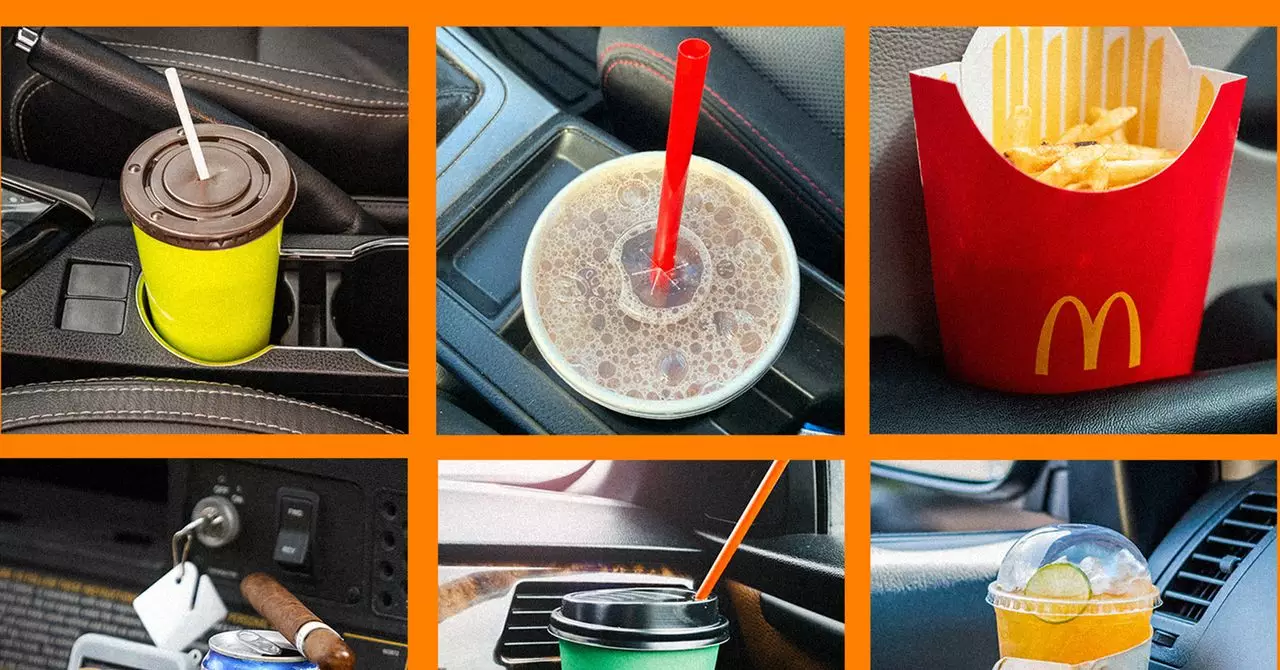In an era where digital dashboards, advanced driver-assistance systems, and ambient lighting dominate automotive innovation, one might assume that comfort and practicality take a backseat. Yet, recent findings reveal that basic everyday features—like the cup holder—remain at the heart of consumer satisfaction. Surprisingly, despite the rapid technological advances and a market obsessed with gadgetry, a persistent dissatisfaction with beverage storage spaces underscores a fundamental truth: the most mundane features can profoundly influence a vehicle’s success.
The auto industry’s fixation on software and high-tech add-ons often overshadows the timeless importance of practicality. Consumers report that luxury, innovation, or even cutting-edge safety features do little to compensate for a poorly designed cup holder. This disconnect suggests that even as cars become more complex and digitally oriented, the core human need for easy, reliable access to beverages persists. This insight raises a provocative question: are automakers undervaluing the importance of basic ergonomic design in favor of fleeting digital trends?
The data consistently illustrates that consumers place immense value on simple, tangible features which directly impact daily life. The report’s findings that nearly 100,000 owners of 2025 model cars expressed frustrations about their cup holders serve as a wakeup call for manufacturers. Instead of relentless pursuit of the newest tech, attention should be paid to these unobtrusive yet critical components. The challenge is not creating a flashy display but designing a space capable of accommodating a variety of beverage containers—be it a tiny energy drink or a massive Yeti bottle—that doesn’t spill or become a daily source of annoyance.
Why Do Cup Holders Matter More Than You Think?
The prominence of cup holder design in consumer satisfaction is rooted in more than just convenience; it taps into emotional and practical realms. For many drivers, the cup holder’s reliability influences their perception of overall vehicle quality. If these spaces are too shallow, difficult to access, or incompatible with popular large-sized drinks, they become symbols of neglect. Ignoring this aspect can lead to widespread dissatisfaction, regardless of how impressive a vehicle’s digital features may be.
Historically, the number of cup holders has been a key differentiator during car purchases. A 20-year-old report from PricewaterhouseCoopers indicated that the presence of sufficient cup storage significantly swayed buyers’ decisions. Today, this importance remains, perhaps even amplified, amid a culture that values convenience. Buyers are willing to pay premium prices for vehicles that integrate ample, well-designed beverage storage. Why? Because in the chaos of modern life, the simple act of grabbing a drink and having it stay safely in place is more than a comfort; it’s a necessity.
Automakers, therefore, face a dual challenge. They must balance the allure of cutting-edge digital interfaces with the timeless human need for practicality. The crash in performance of Nissan’s cup holders, for instance, illuminates a crucial truth: neglecting ergonomic details can lead to consumer discontent and damage brand reputation. Engineers like Chris Fischer emphasize that even the smallest usability aspect has outsized consequences on customer happiness and loyalty.
An Industry Overlooking Its Most Critical Human Element
Despite the technological arms race, the pursuit of perfection in simpler car features is often overlooked. This oversight can be detrimental, especially considering that many buyers prioritize tactile, physical interactions over digital interfaces. The feel of a well-designed door handle or a sturdy, spacious cup holder can convey quality, craftsmanship, and understanding of consumer needs.
Design experts like Dick Powell argue that these touchpoints define the overall experience of owning a vehicle. They shape the emotional connection and influence brand perception. When these elements are poorly executed—be it tiny cup holders that spill drinks or difficult-to-reach storage—they tarnish the sense of quality that otherwise accompanies a vehicle’s advanced features.
The challenge for automakers is clear: innovate without sacrificing core user experience. In a world obsessed with technological prowess, the humble cup holder becomes a symbol of automotive integrity. It reveals whether manufacturers truly understand their customers or are simply chasing after high-margin features that catch the eye but neglect daily practicality.
As the industry advances, it is crucial for manufacturers to reconsider where their priorities lie. The luxury of expansive digital displays and frilly interior gadgets does little if drivers find their car’s primary function—holding beverages—flawed. Emphasizing ergonomic, adaptable, and spacious cup holders might be the smartest move for brands that want lasting customer loyalty. After all, sometimes the simplest solutions, like a well-designed cup holder, hold the most power in shaping the future automotive landscape.

